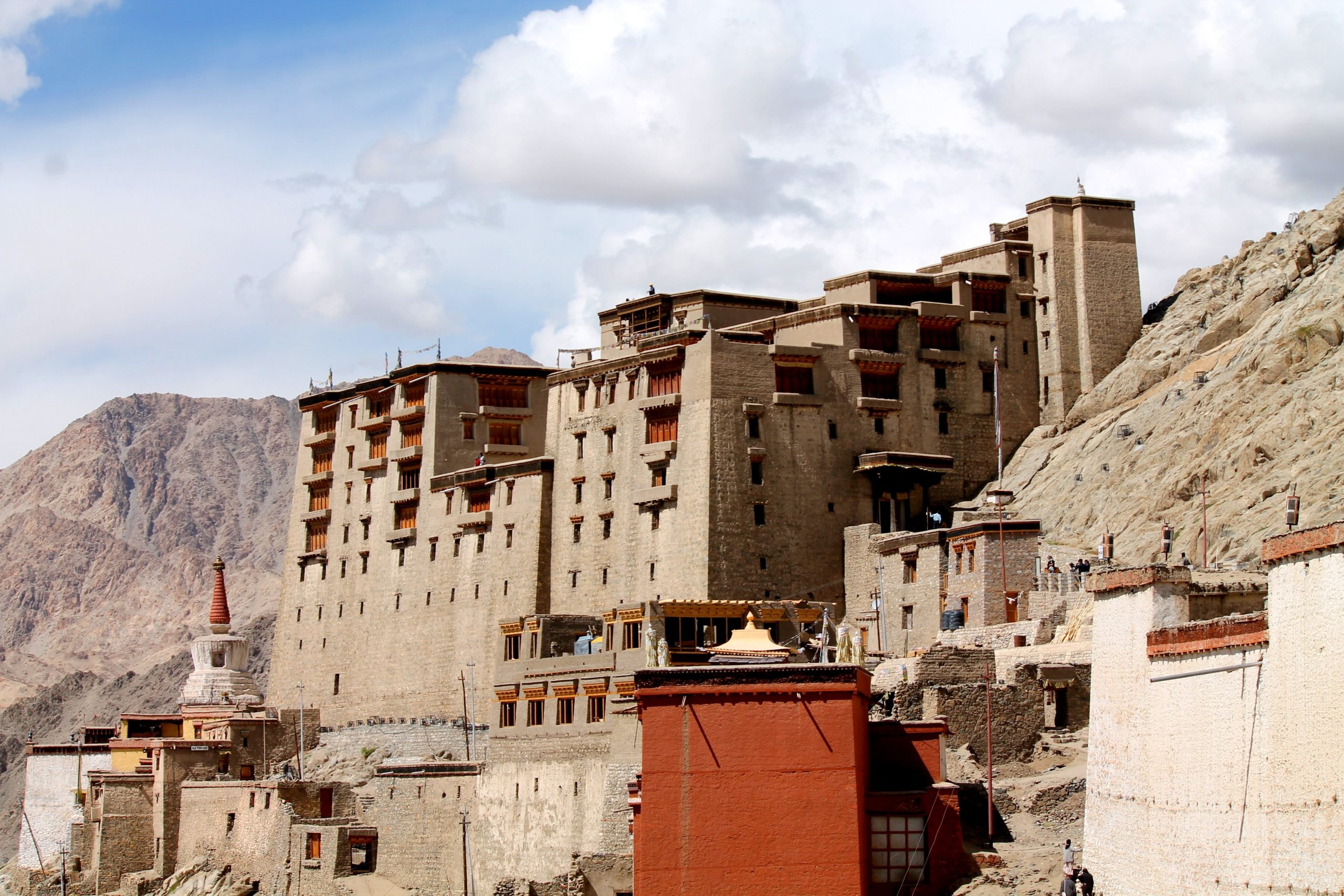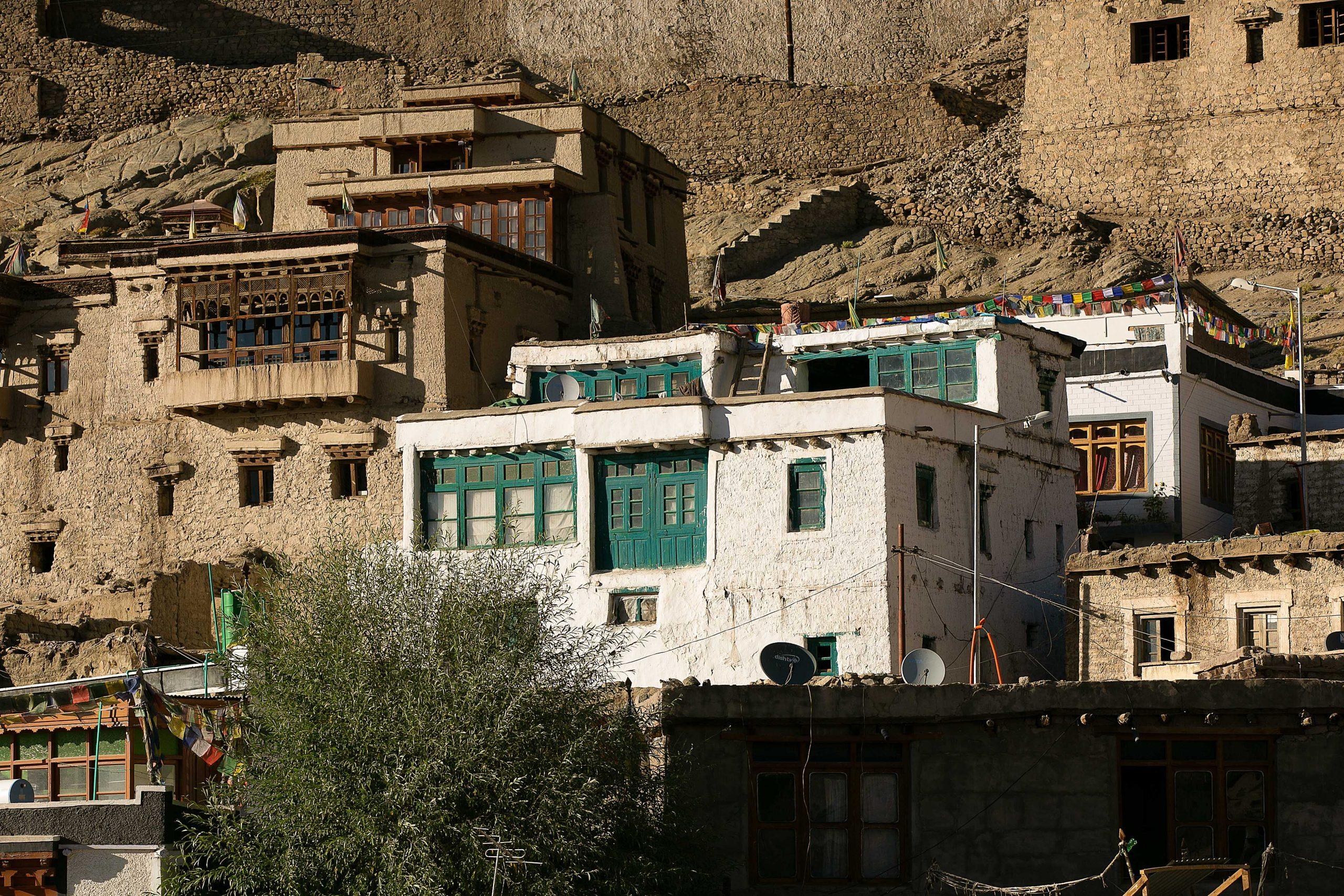In May 2022, a friend suggested travelling to Ladakh. Despite my motion sickness and fear of heights, the fragility of the landscape somehow screamed solidarity with my state of mind at the time, and I said yes.
I remember landing at Leh’s Kushok Bakula Rimpochee Airport, and reaching my taxi while struggling to catch my breath in the high-altitude town. I was still trying to take in the nakedness of the mighty Karakoram and Himalayan ranges on the way to my resort when I crossed a majestic, brown structure, perched high on a hill, looming over Leh — as though blessing the town with its very existence. I was immediately intrigued by its rugged, monochromatic appearance, and later learnt that this was the Leh Palace, also called the Lachen Palkar Palace. I also saw similar structures — including our cabin at the resort we stayed at, public buildings, homes, and so on — sitting quaintly at other spots in different forms. This is how I was introduced to the ingenious tradition of rammed-earth architecture.
Rammed-earth structures are found across geographies — in North and South America, Australia, China and parts of Europe and Africa. Typically, the walls of these buildings consist of layers of compacted soil that is sometimes mixed with straw or lime. These buildings have been known to last for centuries, and the nine-storeyed Leh Palace — built over three years in the early 17th century CE when Ladakh was under the rule of King Senge Namgyal — is proof. According to the Archaeological Survey of India (ASI), which maintains the palace, it was the tallest structure in Ladakh and Tibet, and the highest in the world, at the time. It was constructed in the Tibetan architectural style that was later made famous by the relatively larger Potala Palace in Lhasa, which was historically the winter palace of the Dalai Lama.
“Locals told me that now, with climate change leading to unprecedented rainfall and extreme temperature changes, and with easier, cheaper construction materials available, most earthen buildings are becoming susceptible to rapid erosion.”
Two days into my trip, when I visited the palace, I realised that many buildings in the old town — the fortresses, sacred buildings and ordinary homes — were also constructed with mud. I would see similar houses on a later visit to Spiti. As I walked through the palace and touched the rough walls held together with wooden beams, I couldn’t help but feel a sense of astonishment at how the indigenous architecture had survived.
The Leh Palace was constructed using locally available materials such as mud-mortared stone for the walls, and local timber like juniper, poplar and willow brought in from surrounding villages. It also uses sun-dried mud bricks and markalak, a waterproofing clay. The mud layered on the walls naturally increases frost resistance and provides better thermal insulation.
A plaque installed at the site by the ASI reads that the stonework on the corners, and the walls that taper gently and are embedded with horizontal timber beams, prevent vertical cracks from forming in the structure. The walls at the upper levels are less thick, and mud bricks were only introduced from the sixth level onwards, to reduce the load on the base of the palace and provide stability. These touches have kept the palace standing despite earthquakes and other natural disasters.
Following the Dogra invasion of Ladakh between 1834 and 1840, the palace was abandoned and eventually started to decay. The ASI purchased the palace in 1991 and began repair and renovation work in 1995. But locals told me that now, with climate change leading to unprecedented rainfall and extreme temperature changes, and with easier, cheaper construction materials available, most earthen buildings are becoming susceptible to rapid erosion. Last year, when I visited Leh for the second time, I stayed there for more than four months, crossing the spectacular palace regularly. Even now, when I look at the pictures, I wonder that if rammed earth has survived for so long, why are we trying to fix what’s not broken?
Find your way to the Leh Palace in Leh, Ladakh via Google Maps here.
Our selection of stays across India, best visited for their design and style. Check in
Misha Paul is a freelance marketing and communications consultant and the owner of a sustainable fashion label, based in Mumbai. She is passionate about stories, saris and sustainability. She is on Instagram at @mishapaul_.








